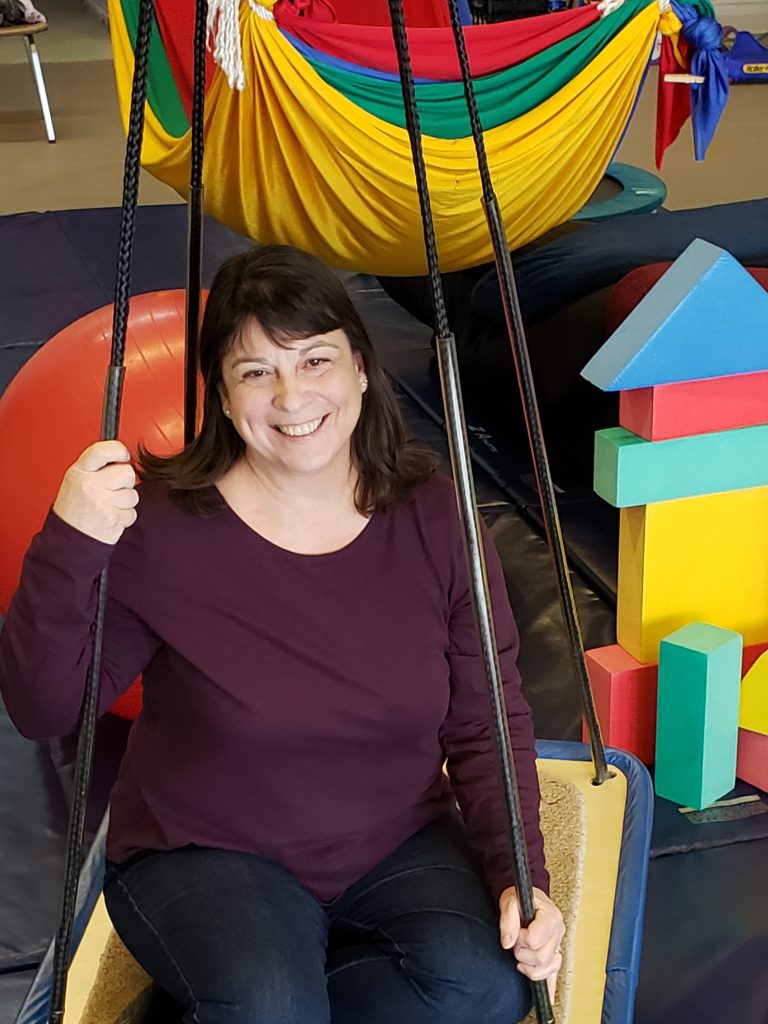5 Tips: Differentiating Sensory from Behavior

By: Debra Johnson, MS, OTR/L
April is Occupational Therapy Month and a good time to gain a better understanding of how OTs can help children who are exhibiting challenging behaviors and struggling with participation in daily activities. Since Sensory Integration Theory was first proposed by renowned OT Dr. A. Jean Ayres, OTs have gained a reputation as the “sensory experts” but our training goes well beyond a sensory integration frame of reference and provides a solid background for supporting children whose primary obstacle to participation in their occupations (learning, play, family life, and ADLs) is challenging behavior, whether that behavior is sensory based or not.
In my practice as an OT, I have taken lessons learned from a wide variety of experts to create a framework for addressing challenging behaviors that focuses on supporting the child to build skills that reduce or, ideally, eliminate challenging behavior. While many approaches focus on controlling the child’s behavior, I prefer to focus on influencing the behavioral responses by
empowering the child and parent with tools for success. My approach to working with children is founded on these principles:
1) Problem behaviors are part of typical development. As children learn how to navigate the world around them they will typically try out maladaptive ways to meet their needs. With the right guidance from adults, all children can learn more adaptive ways to respond. Challenging behaviors (those that interfere with development, are harmful, or put the child at high risk for later problems) require intervention that is supportive and empathic.
2) A child’s behavior is a form of communication. It’s up to adults to be objective and non-judgmental so we can hear the message. Keen observation without bias to explore the possible stimuli for the behavior is crucial for collecting data and establishing a hypothesis about what might be contributing to the behavioral response.
3) “Children do well if they can” ~ Ross Greene, PhD. All children want to do well but some children lack the skills to do so. Discovering what skill is lagging and how to best teach that skill is the primary focus of problem solving and therapeutic intervention.
4) Relationships are vital for a child’s self-regulation and learning. Building social relationships with adults supports co-regulation, provides opportunities to model self-regulation, and increases a child’s intrinsic drive to imitate, cooperate, and
participate socially. Relationships open pathways for communication skills, establish environments of trust and safety, and support risk taking for skill development.
5) Recognizing a child’s strengths supports efficacy in interventions and increases a child’s participation in the therapeutic process. Strengths can include a child’s skills, abilities, passions, interests, and obsessions. Using what interests a child is motivating and results in reduced escape and task avoidance behaviors. Focusing on a child’s strengths increases their self-esteem and confidence while using strategies that are more likely to be successful, fostering skill building and improving motivation for continued task participation.
Using this framework for problem solving when faced with challenging behaviors, I find success while focusing on priorities of a child’s ability to regulate emotional responses, their ability to establish relationships, and their skill development to re-mediate functional deficits. Whether the factors influencing maladaptive behaviors are sensory related or not, this framework is a useful
tool for viewing all behaviors and opens the door for us to effectively problem solve for solutions that create lasting change in behaviors.
To learn more about Debra Johnson’s course, “Differentiating Sensory from Behavior,” click here!